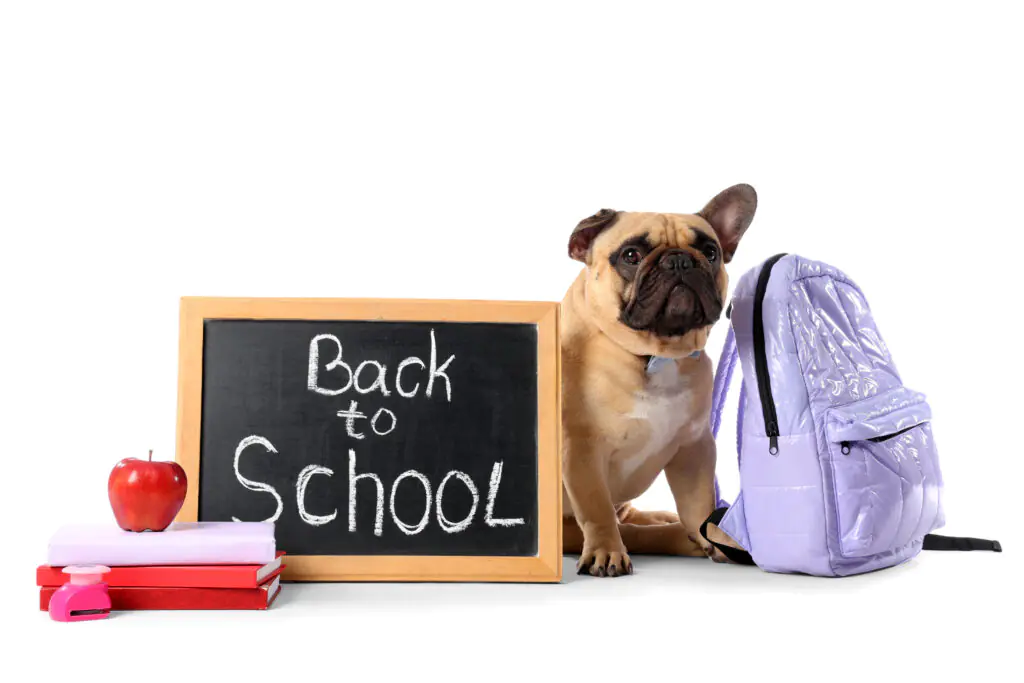
The long, sun-soaked days of summer are a magical time for kids – and for dogs. With the family home more often, routines are relaxed, the backyard is buzzing with play, and your pup likely has more belly rubs, dropped snacks, and spontaneous fetch sessions than ever.
But then September rolls around and the kids go back to school and the energy shifts. Backpacks replace beach towels, the front door swings open and closed on a schedule again, and suddenly – it’s quiet.
For dogs, this transition can be confusing, lonely, and even distressing.
Just like people, dogs can experience anxiety during change, especially when that change involves the sudden absence of their favourite small humans.
Why Dogs Get Anxious When It’s Back To School Time
Dogs are creatures of habit. They thrive on consistent routines and emotional connection. During the summer, your dog may have grown used to having constant companionship. The sudden shift to long, quiet hours alone can feel like abandonment – even if you’re still coming and going.
You might notice signs like:
Excessive barking or whining when left alone
Destructive behaviour (chewing, scratching doors)
Accidents in the house
Pacing or restlessness
Loss of appetite
Lethargy or depression-like behaviour
This isn’t bad behaviour—it’s stress. And it’s totally understandable.
What You Can Do to Help
Thankfully, there are ways to help your dog through the back-to-school transition, making it easier for both of you.
Ease into the new routine
If possible, start practicing the school routine a week or two early. Have the kids leave the house at the same time they would for school, even if it’s just for a walk or playdate.
Let your dog adjust gradually to quieter days and shorter interactions.
Create a positive “goodbye” ritual
Dogs pick up on our energy. If leaving in the morning feels frantic or emotional, your dog will sense that and associate it with stress. Instead, create a calm, consistent routine: a short walk, a treat puzzle, and a simple “see you soon” can go a long way.
Enrich their alone time
Leave behind interactive toys or slow feeders to keep your dog mentally stimulated during the day. Puzzle toys, snuffle mats, or even a safe chew can help reduce boredom and stress. Some dogs enjoy calming music or white noise while you’re away.
Make reunions low-key but meaningful
It’s tempting to smother your dog with affection the second you walk in the door – but a calm, steady greeting helps reinforce that being alone isn’t a big deal. Of course, once the excitement settles, extra cuddles are always welcome.
Keep them physically and mentally active
A morning walk or quick game of tug before you leave can help burn off nervous energy. After school or work, plan a little one-on-one time – whether it’s a longer walk, a car ride, or just hanging out together in the garden.
Let kids stay involved
Even if school is back in session, kids can still be part of your dog’s care. Maybe they’re in charge of the afterschool walk or giving your dog their dinner. This continued bond can comfort both the kids and the pup during the adjustment.
When to Seek Help
If your dog’s anxiety seems severe or doesn’t improve after a couple of weeks, don’t hesitate to talk to your vet or a certified dog behaviourist. Sometimes, professional support can make all the difference.
The Good News? Dogs Adapt
It might be a rocky few days – or a few weeks – but dogs are incredibly resilient. With some patience and consistency, most dogs will settle into the new routine. And when the weekend rolls around and the house fills up again, your pup will be right there, tail wagging.
After all, they don’t need summer to feel loved – they just need you.

